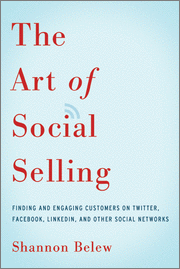Adjusting to Algorithm and UX Changes: How Your Social Media Strategy Should Revolve Around the Platforms Themselves
This page may contain links to Amazon.com or other sites from which I may receive commission on purchases you make after clicking on such links. Read my full Disclosure Policy

Having an active social media presence can benefit all types of brands. Social media channels are a perfect place to showcase your business and can often help increase referral traffic to your website.
But to get the most out of social media, you must be willing to adapt. The same strategies that significantly increased follower count and engagement rates a few years ago might not apply anymore. As social media platforms continue to evolve, so do the algorithms used for monitoring and sharing content updates to users.
However, regardless of these shifts, you can still create an effective and sustainable strategy that maximizes your online presence by following changes closely and keeping your business flexible.
Pros and Cons of Social Media Algorithm Changes
Every social media network relies on algorithms to determine what content users see, and when. Similar to how Google’s crawlers index and rank websites in search results (SERPs) according to relevance, social media platforms leverage comparable techniques.
While this improved accuracy in user preferences helps individuals avoid being overwhelmed with irrelevant content, these algorithms can also present unique hurdles for companies.
For businesses, algorithm updates can translate to substantial shifts in brand presence, either positive or negative. Changes that favor a company might lead to exposure to a more broad audience and increased brand visibility, which can result in more promising leads and improved conversion rates. On the opposite side of things, if algorithm updates go the other way, a company might rapidly lose ground on certain social platforms and experience a drop in traffic or revenue over time.
How UX Redesign of a Platform Impacts Users
The success of any digital platform relies heavily on ensuring a positive user experience, which also goes for social media platforms. Improvement to user experiences (UX) usually comes with a change in layout, addition of relevant content, and possibly the removal of now-obsolete elements.
When companies make these changes, the main purpose is to make different parts of the platform user friendly or to simply improve the customer journey. These changes, no matter how big or small, can change how potential customers interact with a business on multiple levels. They often affect the way a company’s marketing strategies are designed and ultimately, whether or not they remain effective long-term.
Actions to Take To Help Your Business Evolve With Social Media Changes
Here are some practical steps your company can implement to keep pace with changing social media algorithms:
Stay Informed on Potential Changes
Being in the know about shifts or updates on various social media platforms is critical for long-term success. Changes in algorithms, modifications to user interfaces, or added features can take place overnight and with little to no warning.
The simplest approach is to make platform training and industry awareness part of your regular work routine. This can be achieved by reading industry-related blogs or publications, or subscribing to social media platform developer updates.
These resources can provide helpful formation early, which allows you to be aware of any major updates or changes to platforms before they happen. Being proactive in this regard helps you plan out your marketing strategy more effectively or adjust your content calendar accordingly.
Focus on Data Analytics
Data analysis is very important when you’re trying to understand the type of audience you’re targeting and their online behaviors. In addition, analyzing data helps form accurate conclusions regarding how effective the content you’re producing actually is to them. Following KPIs such as likes, shares, comments, click-through rates, and the time spent on your pages should tell you what ideas or resources resonate well with that specific audience.
Most social media platforms appreciate the value of user data for businesses and provide built-in analytics tools. These platforms can be a valuable information source, allowing you to monitor various helpful insights into how well branded messages are being received.
This data on these platforms can also include everything from demographic breakdowns of an audience to granular details like the overall visibility and engagement level on individual posts.
Produce Higher Quality Content
Now more than ever, content must be creative, highly engaging, and valuable for audiences. Business should aim to produce something worth attention and that actively stands out from what their competition is publishing and distributing.
The best tip for achieving this goal is to focus on each individual social media platform’s specific audience demographic. This more strategic focus can go a long way in content marketing.
You’ll want to avoid using a blanket approach when executing your content delivery. Instead, allocate sufficient time and resources to evaluate each platform’s user type. This will let you create more unique content that connects with users while also ensuring all your content meets the best practices and recommended guidelines of the platform.
Diversify Your Content Formats
Trying out a variety of content types is another excellent strategy for connecting with a broader audience and adjusting to algorithm updates. Utilizing videos, live sessions, interactive surveys, and other dynamic formats can significantly enhance the user experience and boost brand visibility.
Varying your content types also builds greater resilience to algorithm adjustments. Down the road, if one format sees a drop in visibility, alternative formats can help you sustain the presence you’ve built and keep your engagement levels stable.
Make Your Social Media Strategy Resilient
To be successful on social media, building a strong brand identity and an active community is important. Staying connected is the most crucial part. Audiences respond to brands that are real and present on social media. This gives brands an active voice and can improve customer loyalty.
Adaptability is just as important. In order to stay relevant, you should be ready to implement new strategies often, and adapt to changes on the platform as they come up.
Maintain an Adaptable Social Media Presence
Social media networks are regularly changing how they identify and deliver content to users. By understanding the principles behind algorithm updates and UX changes, leveraging data analysis, and focusing on high-quality and diversified content, you’ll guarantee your social media strategy remains effective regardless of platform changes that come up.
Illustration © Rangizzz / DepositPhotos











Keeping track and getting the most of the algorithms is a full time job. As a small business owner, who does this myself, I know I’m not taking full advantage of these tools. If I were starting today, I would probably hire someone to do this for me!
I hear you, Seana! you can spend a lot of time not just learning about the changes but applying them to your social media marketing.
Great tips! I found that signing up for newsletters from social media platforms helps you stay informed about changes and how they will affect you.
Great idea, thank you!
“Changes in algorithms, modifications to user interfaces, or added features can take place overnight and with little to no warning.” Well ain’t THAT the truth? In the old days, social media was truly social, and it was about the message; it didn’t have to be slick or packaged, and things didn’t change so quickly. The point, then, was for people to be able to connect with the accounts that resonated with them. Now, it’s about making money for the platforms, often to the detriment of both creators and users.
As a user, one of the reasons I like TikTok is that the algorithm feeds me what I want; it might be an echo chamber of babies, cheese, ’80s music, and my brand of politics, but when I have followed someone I know that I will be their material in my feed, and I almost never see anything I don’t actually want. If I were a TikTok content creator, I’d feel fairly sure that (unless I ran afoul of their rules), people who wanted to see me would see me. Conversely, Facebook has changed its algorithm so many times, and each iteration has been worse than the last, both as a user and content creator.
Keith’s advice is surely the only way to make it worth trying to share content on social media at all. Making high quality content will always be key, but it gets harder and harder to stay abreast of the changes. I get Mari Smith’s newsletters, which keep me in the know about Facebook, but with Twitter’s demise and everything trying to take its place (BlueSky, Threads, Mastodon, Spoutible), it’s hard to find a platform that matches my aesthetic. (Let’s face it, I’m not about the graphics, so I’ll never head to Insta.) I don’t imagine I’ll ever be the kind of person who embraces metrics for social media. I’d like to think (like Seana) that if I were starting over, I’d outsource, but the truth is, I suspect that if I were starting out now, all of these social media algorithm changes would make me not to want to get started at all.
Keith’s advice is essential, but I can’t say it makes me happy. Once more unto the breach!
Even though you weren’t trying to be funny, I just had to laugh when I read this: “Keith’s advice is essential, but I can’t say it makes me happy.” I don’t know how many times I’ve had a similar thought when reading some of your posts about serious matters. 😀
I didn’t know that TikTok was so good in that way. I don’t watch many videos, so I’ve never bothered to check it out. Thanks for that nugget!